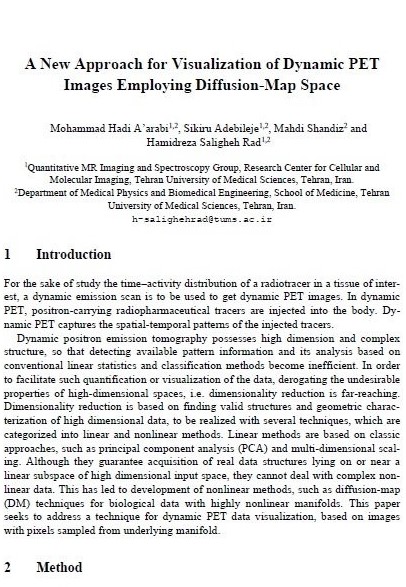A New Approach for Visualization of Dynamic PET Images Employing Diffusion-Map Space
Abstract
For the sake of study the time–activity distribution of a radiotracer in a tissue of interest, a dynamic emission scan is to be used to get dynamic PET images. In dynamic PET, positron-carrying radiopharmaceutical tracers are injected into the body. Dynamic PET captures the spatial-temporal patterns of the injected tracers. Dynamic positron emission tomography possesses high dimension and complex structure, so that detecting available pattern information and its analysis based on conventional linear statistics and classification methods become inefficient. In order to facilitate such quantification or visualization of the data, derogating the undesirable properties of high-dimensional spaces, i.e. dimensionality reduction is far-reaching. Dimensionality reduction is based on finding valid structures and geometric characterization of high dimensional data, to be realized with several techniques, which are categorized into linear and nonlinear methods. Linear methods are based on classic approaches, such as principal component analysis (PCA) and multi-dimensional scaling. Although they guarantee acquisition of real data structures lying on or near a linear subspace of high dimensional input space, they cannot deal with complex nonlinear data. This has led to development of nonlinear methods, such as diffusion-map (DM) techniques for biological data with highly nonlinear manifolds. This paper seeks to address a technique for dynamic PET data visualization, based on images with pixels sampled from underlying manifold. 2 Method Dynamic PET is

